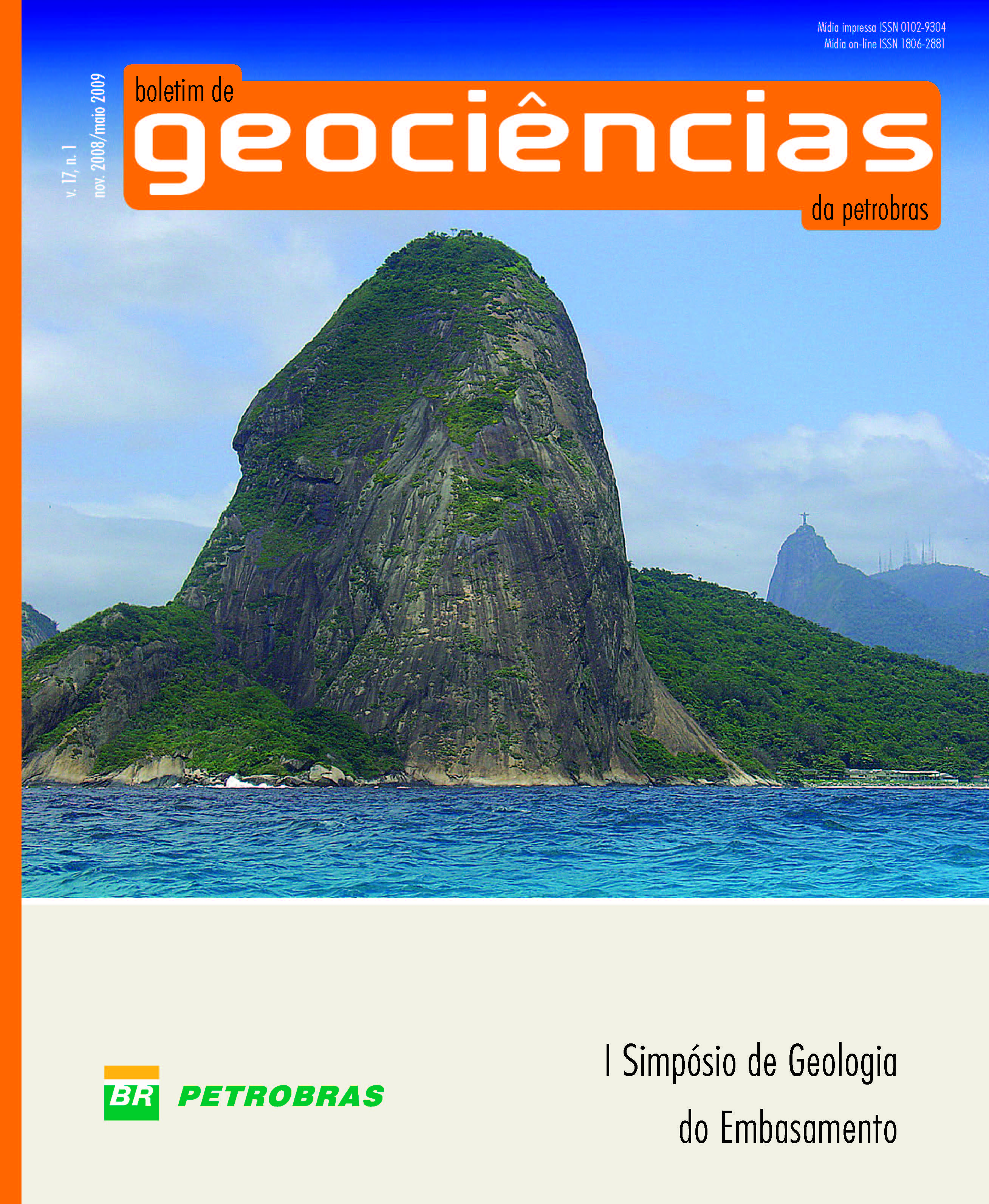Evidences of uplands during the Campanian time, Espírito Santo Basin
Keywords:
Palynology, Callialasporites, Campanian, uplands, apatite fission tracksAbstract
The palynological analysis carried out in four wells in the Espírito Santo Basin has revealed an expressive abundance of Callialasporites sp. cf. Perotrilites sp. sensu Herngreen (1975) pollen grains, during the Campanian-Maastrichtian interval and, especially, in the middle Campanian. The high abundance of this species was related to the paleoflora adaptation to the favorable paleoecological conditions. The Callialasporites genus belongs to the Podocarpaceae family (gymnosperm), which, nowadays, occurs mainly in upland areas. Therefore, it is possible to relate the high abundance of this species to the development of podocarpacean paleoflora in uplands during the middle Campanian. The apatite fission tracks analysis (AFTA) data was developed in the project entitled “Tectonic Evolution and Thermal History of the Southeast Brazilian and West African Margins” (UFRGS/UNICAMP/Petrobras). According to AFTA data of the Espírito Santo state coastal region, an important tectonic event occurred, causing an uplift process with a posterior denudation of the area during the Campanian (80 Ma). This data correlates with the proposed palynological interpretation to explain the abundance of Callialasporites sp. cf. Perotrilites sp. sensu Herngreen (1975). This event would be associated with the creation of uplands that favored the development of podocarpacean paleoflora adapted to mountainous paleoecological conditions
Downloads
Published
Issue
Section
License
This license enables reusers to distribute, remix, adapt, and build upon the material in any medium or format, so long as attribution is given to the creator. The license allows for commercial use.


